The city of Stuttgart is unusual for a German city. The country’s sixth-largest city spreads across rolling hills, valleys, parks, and of course, vineyards. Long time friend and fellow sommelier, Liesel Braun and I have returned to this wonderful city after spending a few days traveling along the banks of the Mosel River, exploring the wines of Rhinegau and Rheinhessen. This is a panoramic land of rolling hills and castle crowned vineyards whose viticultural history dates back to the time of the Romans.
Liesel and I are at one of the city’s most popular cafe/pubs, Cape Tormentoso. The basement bar has a flair all its own and quite popular with the local hipsters. The drink menu is one of the best in Stuttgart and the wine selection is equally as encompassing.
“Let’s not forget the food,” Liesel was quick to add. “Cape Tormontoso also serves some very delicious food.”
German wine can be a bit of a challenge to pair with the heavy and hearty local dishes that the country is renown throughout the world. Whenever German wines are raised in the conversation, Riesling is always the first choice. Keep in mind that not all Rieslings are sweet. Good bottles of the noble vino are labeled “trocken,” which means dry. However, today, Liesel and I will be tasting some wonderful German wines that are lesser known, but readily available in the States.
Rheinhessen is the largest of Germany’s regions producing quality wines such as Riesling, Mueller-Thurgau, Silvaner, and Liebfraumilch. It is also the home of my favorite German Riesling, Dreissigacker.
 Our Dressigacker Riesling Trocken 2010 is a wonderful wine that can be enjoyed with or without food. It is a refreshing wine, and one of my favorite daily drinkers. Dreissigacker is a pale lemon in color with hues of green. The bouquet is rich in ripe green apples, plums, and a hint of lime peel. On the palate, this Riesling is fruity, elegant and well-balanced. The finish is long and pleasurable, making you crave more.
Our Dressigacker Riesling Trocken 2010 is a wonderful wine that can be enjoyed with or without food. It is a refreshing wine, and one of my favorite daily drinkers. Dreissigacker is a pale lemon in color with hues of green. The bouquet is rich in ripe green apples, plums, and a hint of lime peel. On the palate, this Riesling is fruity, elegant and well-balanced. The finish is long and pleasurable, making you crave more.
“When you first introduced me to this wine I was quite pleased,” Liesel smiled fondly. “It is also nice to see a young vintner like Jochen Dreissigacker find success so early in his career.”
“Jochen was very instrumental in helping Chris Terrell and I popularize his Riesling throughout California.”
“I like the off dryness to this Riesling,” Liesel paused to collect her thoughts. “I would serve it with salads, shellfish, and fish.
Our Dreissigacher Riesling Tronchen 2010 is only 12% alcohol and with a price tag of $20.
These days, there are a lot of great wines being produced in Germany. At one point, the German winemakers stood at the pinnacle and rivaled the French. After a series of setbacks, Germany is one again producing premium world class wines. Among some of the most interesting are those labeled “Spatlese.” The literal meaning is “late harvest.” Spatlese wines are on the sweet side, yet not to the point of being considered a dessert wine. Due to its lower alcohol content, Spatlese wines work well early in the meal.
Our next selection was a Selbach-Oster Wehlner Sonnenuhr Riesling Spatlese 2006. It is a pale yellow in color, edging on gold. The nose is somewhat intense, displaying notes of lemon, apple, and honey. On the palate it is off-dry to medium, with high acidity and medium body. It is balanced nicely with flavors of honey, lemon, and apple. The subtle mineral quality on the end palate brings the wine to a very nice finish.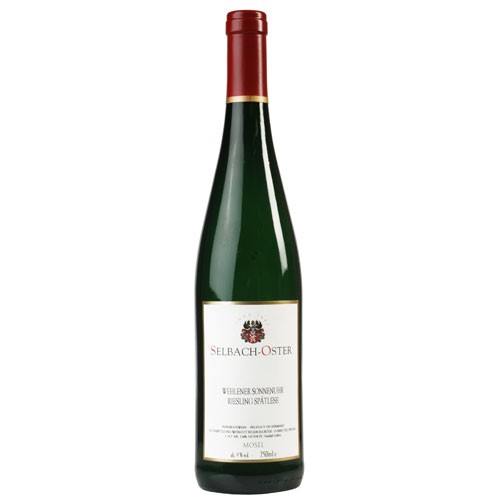
“I especially liked the wine’s acidity,” Liesel concluded. “It was quite zesty and refreshing. This wine could be paired with a wide variety of foods.”
“This is a great wine to sip and enjoy on its own,” I nodded in approval. “A very good buy at $25.
Our Gutzler Blanc de Noir White Pressed Pinot Noir 2007 is not a Riesling. It is made from the juice of from red pinot noir grapes that have been pressed out and fermented without skins. It is a pale yellow in color with a light greenish tinge. The bouquet is earthy with lovely herbal hints. It is a clean and light dry wine that offers flavors of peach and apricot, along with strong mineral notes and a good finish. This is a great wine to enjoy on its own or as an aperitif. The alcohol content is 13% and a price tag of $25.
“Gutzler can be enjoyed with a wide range of seafood,” Liesel flashed me a smile. “I often enjoy it with sushi.”
 “Myself, I prefer it with oysters,” I flashed her a mischievous grin.
“Myself, I prefer it with oysters,” I flashed her a mischievous grin.
The Franconia region is known for its white wines. Gruner Silvaner is Germany’s most underestimated grape varietal. Nevertheless, it is quite popular with the locals. This lovely wine has a floral bouquet with hints of apricot and peach.The mouthfeel is very soft and very drinkable. Perhaps even too drinkable. Every time I visit Germany, I find myself drinking more Silvaner than the other popular German varietals. Silvaner is always dry. There are two broad styles to Silvaner. The lighter and crisp style tastes of fresh green apples. While the Kabinett-style of riper grapes is richer, creamier, and on the earthy side. On a completely different note, it is easy to spot this wine by the unusual bottle shape. Known as a bochsbeutal, its shape is flat, round, and quite distinctive.
Our Weingut J. Storrlein & Krenig 2008 showed a richness of yellow apples and a most enjoyable and deep mineral quality.
“I especially like that Storrlein is consistently good among Franken producers,” Liesel nodded in approval.
“I especially enjoy how the Kabinett-style wines have fully ripened,” I paused to enjoy my Silvaner.
“The grapes are typically harvested in September,” Liesel added.
“Liesel,” I called for her attention. “What foods would you pair with our Gruner Silvaner?”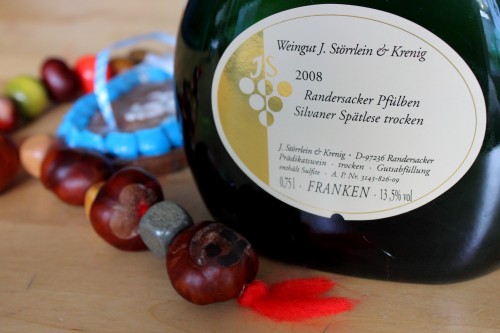
“Since Kabinett is medium dry, I would pair it with lamb, poultry and veal,” she paused to collect her thoughts. “I would also serve it with ragout, fish, and salads.”
Our 2008 Weingut J. Storrlein & Krenig has an alcohol content of 13.5% with a price tag of $25.
“The evening is still young,” Liesel remarked flatly. “Let’s go for a walk and then a cup of Rudesheimer Kaffee.”
“But that my friends, is another story …”




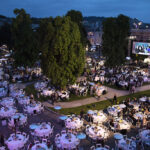
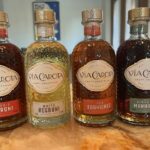


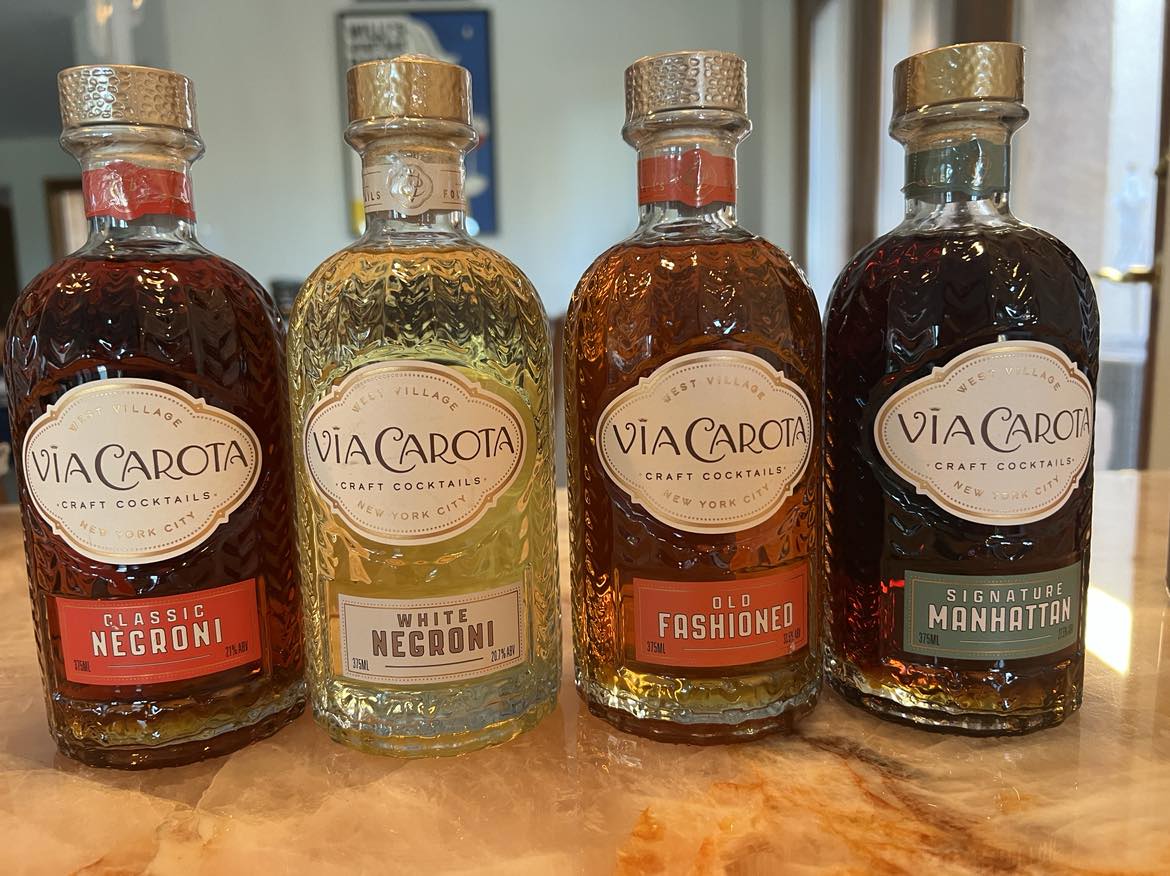
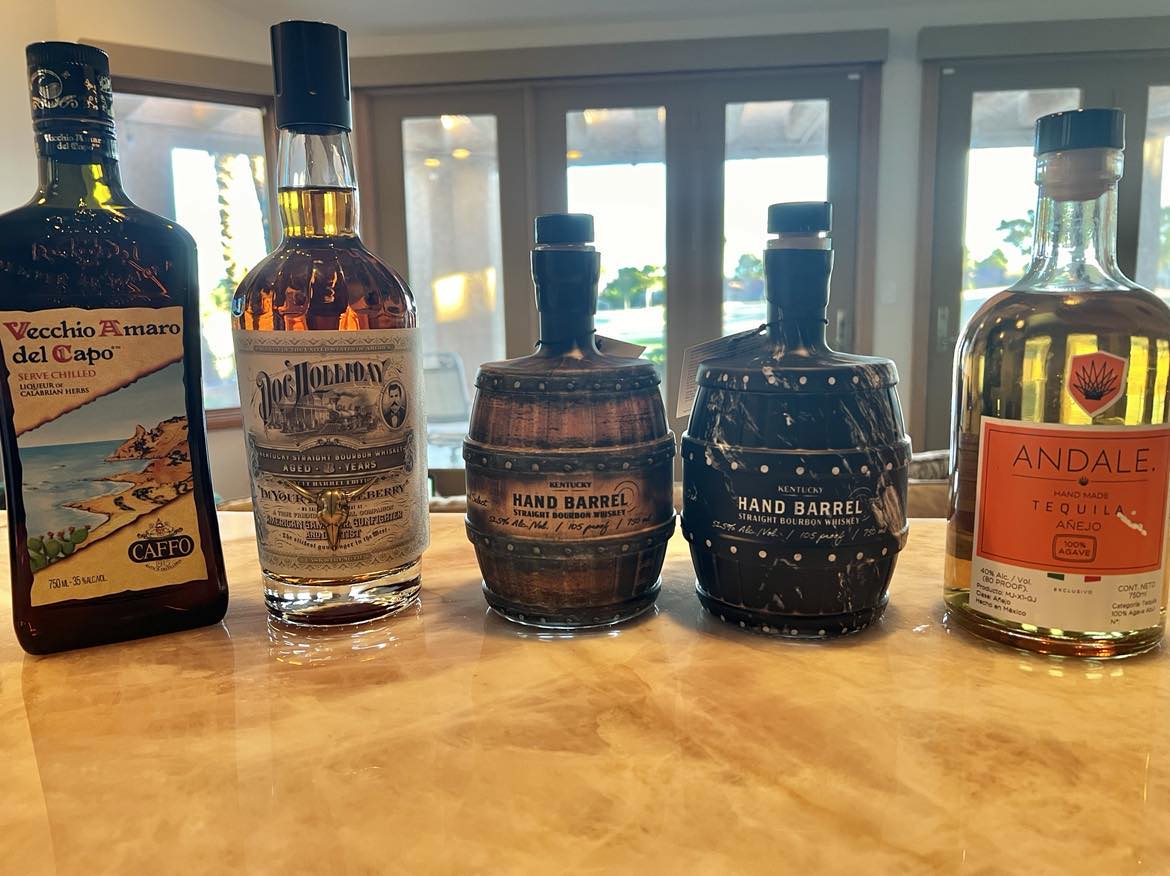
Gregory with a slight touch of irony obviously an artist in the description of the characteristics of each wine)) What a riot of colors)) Even a person so far away from it and wants to go to Germany to taste Rieslings biting their with proposed courses
Selbach-Oster is one of my favorite wines,because its sweet like a candy.
Now that spring is here, it is time for festive more festive and lighter wines. German wines are perfect for the warmer seasons. The rieslings are my personal favorite and I have often enjoyed Dreissigacker.